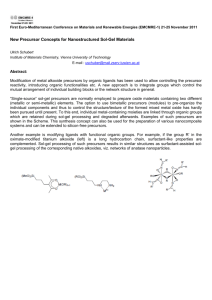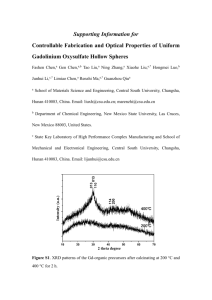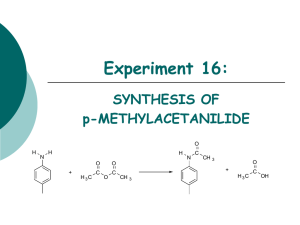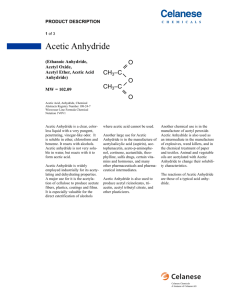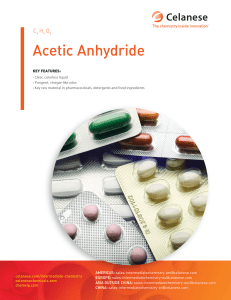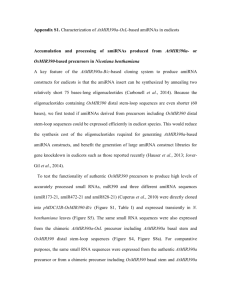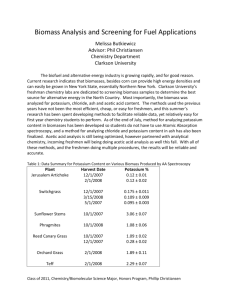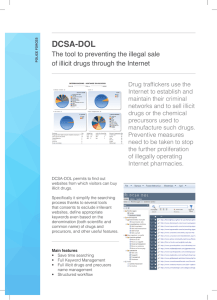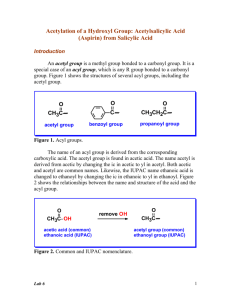DOCX 24.53KB - University of Sussex
advertisement
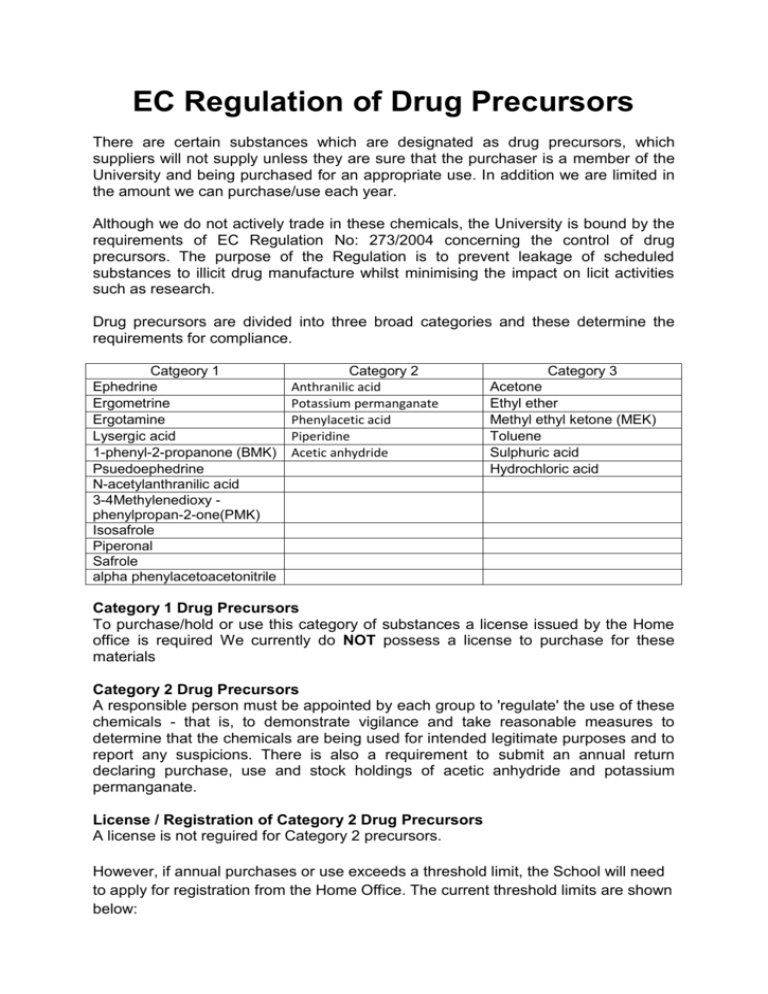
EC Regulation of Drug Precursors There are certain substances which are designated as drug precursors, which suppliers will not supply unless they are sure that the purchaser is a member of the University and being purchased for an appropriate use. In addition we are limited in the amount we can purchase/use each year. Although we do not actively trade in these chemicals, the University is bound by the requirements of EC Regulation No: 273/2004 concerning the control of drug precursors. The purpose of the Regulation is to prevent leakage of scheduled substances to illicit drug manufacture whilst minimising the impact on licit activities such as research. Drug precursors are divided into three broad categories and these determine the requirements for compliance. Catgeory 1 Ephedrine Ergometrine Ergotamine Lysergic acid 1-phenyl-2-propanone (BMK) Psuedoephedrine N-acetylanthranilic acid 3-4Methylenedioxy phenylpropan-2-one(PMK) Isosafrole Piperonal Safrole alpha phenylacetoacetonitrile Category 2 Anthranilic acid Potassium permanganate Phenylacetic acid Piperidine Acetic anhydride Category 3 Acetone Ethyl ether Methyl ethyl ketone (MEK) Toluene Sulphuric acid Hydrochloric acid Category 1 Drug Precursors To purchase/hold or use this category of substances a license issued by the Home office is required We currently do NOT possess a license to purchase for these materials Category 2 Drug Precursors A responsible person must be appointed by each group to 'regulate' the use of these chemicals - that is, to demonstrate vigilance and take reasonable measures to determine that the chemicals are being used for intended legitimate purposes and to report any suspicions. There is also a requirement to submit an annual return declaring purchase, use and stock holdings of acetic anhydride and potassium permanganate. License / Registration of Category 2 Drug Precursors A license is not reguired for Category 2 precursors. However, if annual purchases or use exceeds a threshold limit, the School will need to apply for registration from the Home Office. The current threshold limits are shown below: Threshold limits: Substance Acetic anhydride Potassium permanganate Anthranilic acid and its salts Phenylacetic acid and its salts Piperidine and its salts Threshold 100 l 100 kg 1 kg 1 kg 0,5 kg As of 30 December 2013 the Home Office have amended the regulations such that: Category 2 Precursors- ‘Category 2’ will remain as an umbrella definition but, the Category will be sub-divided into Categories 2A and 2B. There will be no changes or additions to the chemicals controlled within Category 2, but it will be subdivided as follows: Category 2A- Acetic Anhydride Category 2B- Potassium Permanganate, Phenyl Acetic Acid, Anthranillic Acid, Piperidine. This means that some additional controls will apply, domestically, to Acetic Anhydride (AA). With effect from 30 June 2015, end users of AA (using or expecting to use in excess of 100 litres/ annum (calendar year)) must hold a Home Office Category 2 Precursor Chemical Registration. Purchase of Category 2 Precursors Completion of a Customer Declaration Form is required, this is normally provided by the supplier but a proforma on School headed paper can be found (http://www.sussex.ac.uk/lifesci/internal/servicesandsupport/healthandsafety/forms). One form should be completed for each substance. As no license is required for category 2 or 3 substances N/A should be entered in the relevant section. Details of the intended use e.g. research purposes must be entered and must be signed by a senior member of staff The completed form should be returned to the supplier and a copy sent to the Technical Services Manager. This will be kept for a minimum of three years from the end of the calendar year in which the transaction took place. Once the substances are on site the following information will need to be recorded: (http://www.sussex.ac.uk/lifesci/internal/servicesandsupport/healthandsafety/forms) Supplier Date of Supply Substance Category (1 or 2) Amount and concentration Storage Location Responsible Person Date and Mode of Disposal Category 3 Drug Precursors This category only concerns export of these chemicals and is therefore unlikely to present an issue for the School.
